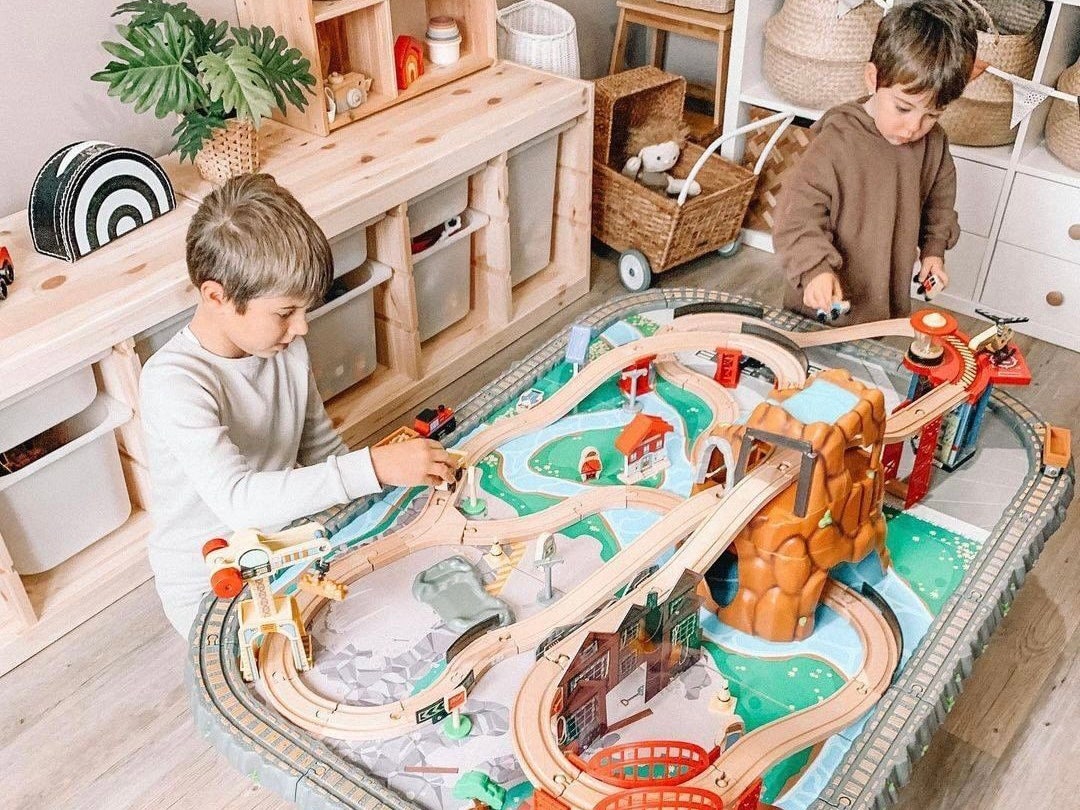
Let’s gather round the table – the activity able that is– for a chat about how these fun furniture pieces can support your child’s development.
What are activity tables?
First off, let’s cover what we mean by “activity table.” While the term is sometimes applied to bouncer-style toys meant for babies, that’s not what we’re talking about here. Our definition is a little more straightforward…as in a kid-sized table meant for activities. Simple enough, right? Usually, those tables will be meant for one of three activities: building bricks (such as LEGOs or similar plastic bricks), train sets, or arts & crafts. Plus, some tables offer a reversible table top, making them suitable for multiple activities. So without further ado, let’s dive into just how these tables can support your littles as they learn and grow!
Improving fine motor skills
Playing with building bricks and toy train tracks and utilizing arts and crafts supplies requires the use of fine motor skills, such as grasping, pinching, and manipulating small objects. Building a LEGO masterpiece, managing a pair of safety scissors, or adjusting the loops on a train track help build hand-eye coordination dexterity.
Developing spatial awareness
Spatial awareness is one of those developmental skills that’s not talked about a ton, but is super important for proprioception (awareness of our body in space) and even academic skills like learning to read and write from left to right. One of the best ways to build spatial awareness in young toddlers? Block play! Building with blocks or building bricks requires kids to visualize and manipulate 3D objects in their mind, which can help develop their spatial awareness and understanding of spatial relationships. Similarly, playing with train sets requires children to understand spatial relationships, such as how the train tracks fit together.
Enhancing creativity and problem-solving skills
LEGO bricks and train tracks offer kids endless opportunities to create their own designs and track configurations, and crafting lets kids get creative with a wide variety of different materials. And when those designs and ideas need adjusting? Kids get a chance to flex their problem-solving skills – a huge part of cognitive development – as they figure out how to re-build or troubleshoot their project.
Encouraging persistence and resilience
When those problem-solving skills come into play, your child’s persistence will too! And sure, persisting through a frustrating challenge can be super tough for a toddler. But letting them face these challenges is critical for building the grit and resilience they’ll need as they grow! So when the train track or brick tower doesn't work out as planned, it’s an opportunity to help your child develop a growth mindset, letting them realize that practice and persistence leads to improvement!
Fostering social skills
One of the best parts about activity tables is that they let kids engage in their favorite activities with a friend! The tables have that cool-factor that makes them a hit at every play date, and they’re spacious enough to let several kids join in on the project at once. Of course, you’ll probably spend a fair amount of time around the table as well, building, collaborating, and creating with your child.
The takeaways…
Overall, activities like train sets, building bricks and crafts offer a fun and engaging way to develop a range of cognitive and fine motor skills. And while you don’t necessarily need an activity table to do these activities, having one is a great way to encourage your child to engage in those activities regularly, providing a dedicated space that draws them in and lets them focus. Whether your kiddo is into building, crafting, or playing with train sets, you can find the perfect activity table for them here!

